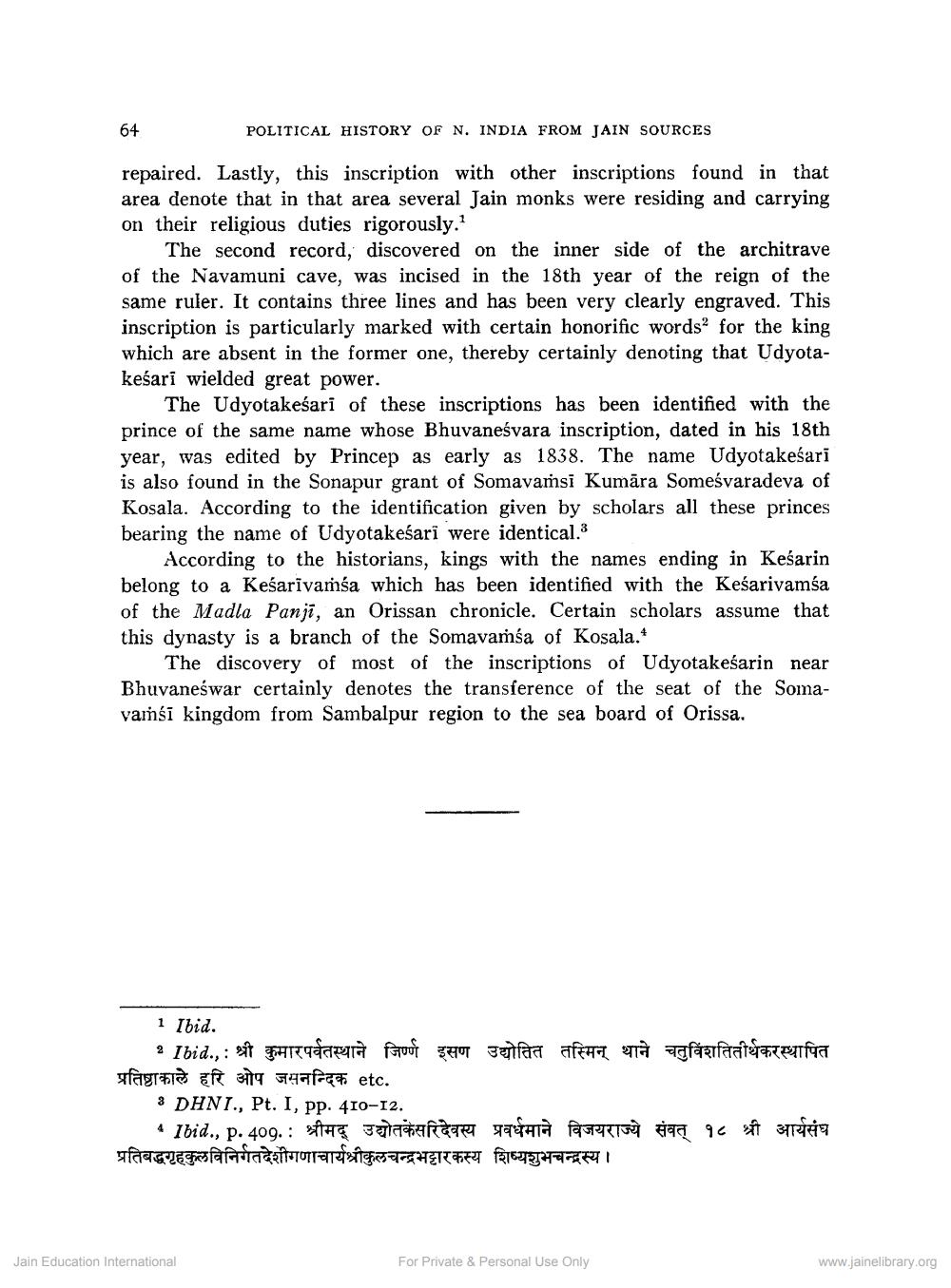________________
64
POLITICAL HISTORY OF N. INDIA FROM JAIN SOURCES
repaired. Lastly, this inscription with other inscriptions found in that area denote that in that area several Jain monks were residing and carrying on their religious duties rigorously.1
The second record, discovered on the inner side of the architrave of the Navamuni cave, was incised in the 18th year of the reign of the same ruler. It contains three lines and has been very clearly engraved. This inscription is particularly marked with certain honorific words" for the king which are absent in the former one, thereby certainly denoting that Udyotakesari wielded great power.
The Udyotakeśari of these inscriptions has been identified with the prince of the same name whose Bhuvanešvara inscription, dated in his 18th year, was edited by Princep as early as 1838. The name Udyotakesari is also found in the Sonapur grant of Somavamsi Kumāra Someśvaradeva of Kosala. According to the identification given by scholars all these princes bearing the name of Udyotakeśari were identical.*
According to the historians, kings with the names ending in Kesarin belong to a Keśarivarśa which has been identified with the Keśarivamsa of the Madla Panji, an Orissan chronicle. Certain scholars assume that this dynasty is a branch of the Somavarśa of Kosala.*
The discovery of most of the inscriptions of Udyotakesarin near Bhuvaneswar certainly denotes the transference of the seat of the Somavamsi kingdom from Sambalpur region to the sea board of Orissa.
1 Ibid.
:
• Ibid, श्री कुमार पर्वतस्थाने जिर्ण इसण उद्योतित तस्मिन् थाने चतुविंशतितीर्थकर स्थापित प्रतिष्ठाका हरि ओप जसनन्दिक etc.
DHNI., Pt. 1, pp. 410-12.
4 Ibid., p. 409. : श्रीमद् उद्योतकेसरिदेवस्य प्रवर्धमाने विजयराज्ये संवत् १८ श्री आर्यसंघ प्रतिबद्धगृहकुल विनिर्गतदेशीगणाचार्यश्रीकुलचन्द्र भट्टारकस्य शिष्यशुभचन्द्रस्य ।
Jain Education International
For Private & Personal Use Only
www.jainelibrary.org




